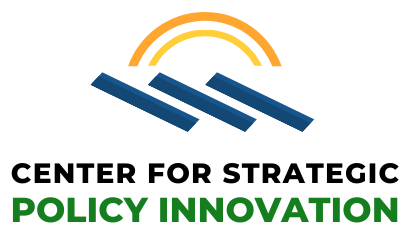SUPPORT OUR CLEAN ENERGY WORK THIS GIVING TUESDAY!
One Thousand Resilient Communities: A Clean Energy and Climate Futures Campaign
Giving Tuesday GOAL: $55,000
Help us fully fund our training for the next 6 months AND jumpstart our $1.5 million Climate Futures Campaign.
Our Beginnings
Our Vision
The Center for Strategic Policy Innovation was founded in 2018 to help jump start clean energy buildout and climate change efforts here in the United States. As a decades-long dream of Kevin Daehnke, a noted California environmental attorney, and operating on a shoe-string budget since its founding, CSPI has managed – in seven short years – to reach and surpass its early goals and to become a respected and acclaimed voice in the clean energy and climate fight.
Our goal, from the days our doors first opened in 2018, has been to empower cities, counties, tribal nations and community leaders across the nation to vision, finance and build solar and to protect communities from the devastating effects of power outages at hundreds of sites in underserved communities everywhere. Our vision is to see massive buildouts of clean energy generated locally, at or near the point of consumption, combined with energy storage and microgrids for resiliency purposes.
DONATE NOW FOR GIVING TUESDAY!
#2: Local champions are often unaware of the vast buildout opportunities
#3: Lack of in-house feasibility/modeling capacity
Three major obstacles to most local solar microgrid/resiliency projects:
#1: There is little know-how on how to target viable sites
The key is to first identify sites where solar buildout is financially viable.
Even with the new IRA tax credit incentives, only certain kinds of local solar energy projects are cost-effective to build without relying on grants or other cash infusions. This is because utilities won’t pay enough for the electricity generated by these smaller local projects to make them financially viable. (Utilities typically pay the same “wholesale” price per kWh for small local projects as they pay for large commercial scale projects built on hundreds of acres far outside of town – which of course have a significant economies of scale advantage over the smaller local projects).
The “workaround solution” for smaller local solar/resiliency projects is to target sites where solar power can be generated and used at the same site, serving as a means to offset the higher prices the utility company charges. These “behind-the-meter” projects (which are on the end-user’s own land and use solar PV systems to generate electricity that is used directly by the end-user, thus offsetting the need to buy expensive electricity at retail prices) are economically viable in most states across the country.
Local leaders are often unaware of the potential buildout capacity for critical local infrastructure from these behind-the-meter energy resiliency projects. Such projects typically include community resiliency centers, schools, hospitals, wastewater treatment plants, police, fire, government operations, schools, and other critical local infrastructure.
Local planners, engineers and community champions often don’t have in-house modeling capabilities to vision these projects even when they are aware of the associated clean energy and resiliency buildout potential.

Our Solution:
National Capacity-building Training Course
CSPI has developed a capacity-building national training course for cities, counties, tribal nations and community/environmental justice advocates across the country to be able to identify, model, and plan for the buildout of solar energy, battery storage, and microgrids for climate action and resiliency purposes throughout their communities. The training was developed in cooperation with Arizona State University’s Laboratory for Energy And Power Solutions and the Department of Energy’s National Renewable Energy Laboratory (NREL).


